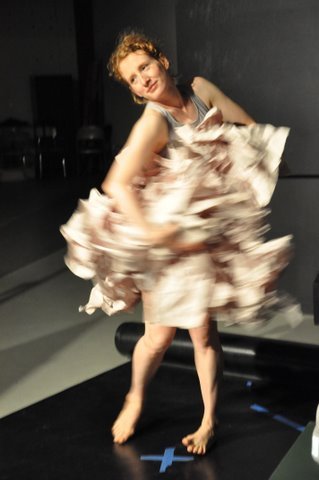The Arts Research Center at UC Berkeley is sponsoring the symposium “Curating People” on April 28 and 29, 2011. Participants have been invited to post some brief thoughts on the topic in advance of the event. This guest posting is by Lisa Wymore, Assistant Professor of Theater, Dance & Performance Studies at UC Berkeley and Co-Director of Smith/Wymore Disappearing Acts.

Confessions of an experimental artist who has also become an academic and a dance/performance educator and mentor
Like many who are part of this symposium, I wear multiple hats in one day. I am both an administrator of a dance program within a university and an artist who manages, runs, and creates for my own dance company. My choice to make artistic work within an academic institution has provided me with distinct types of support and opportunity. I can make work with students and improve upon my own artistic process. I can educate about dance and deepen my understanding of dance practice and pedagogy. I can study performance/dance theory and remain a practice-based, sensate, and process-oriented artist who is inspired by critical inquiry. I can have a research practice involving the creation of an inter-media laband make dances that are informed by this research practice and the access I have to a lab on a regular basis. It is a complicated paradigm that I have created, but one that is endlessly stimulating, demanding, and ultimately rewarding.
In reading the blog postings I felt connected to many of the comments, but one comment by Susan Miller really stood out: “Production is always a collaborative process.” This is an important statement on many levels. Behind the artist, or with the artist, are many collaborators who are often not recognized as such. The nature of these collaborations influences how the work is made, supported, and ultimately received. My academic work includes improving collaborative/production-based processes so that new models for making artistic work (not always in the theater and not always made in the “traditional” theater-based mode) are witnessed and experienced by students, and one can hope, carried into the “real” world. Personally, I carry what I have learned from my academic art making practice into my non-academic art making practice. Often the two worlds are mutually supportive and sometimes they are not. This vacillating and interconnected place where my multiple practices interact, collide, mingle, fuse, etc. is where I am interested in investigating and knowing more about.
No comments:
Post a Comment